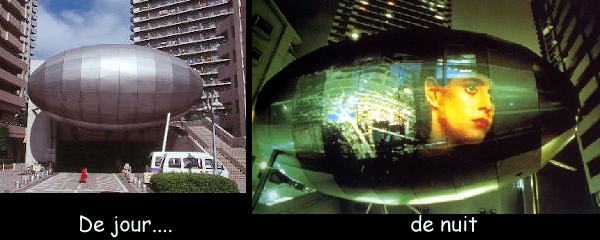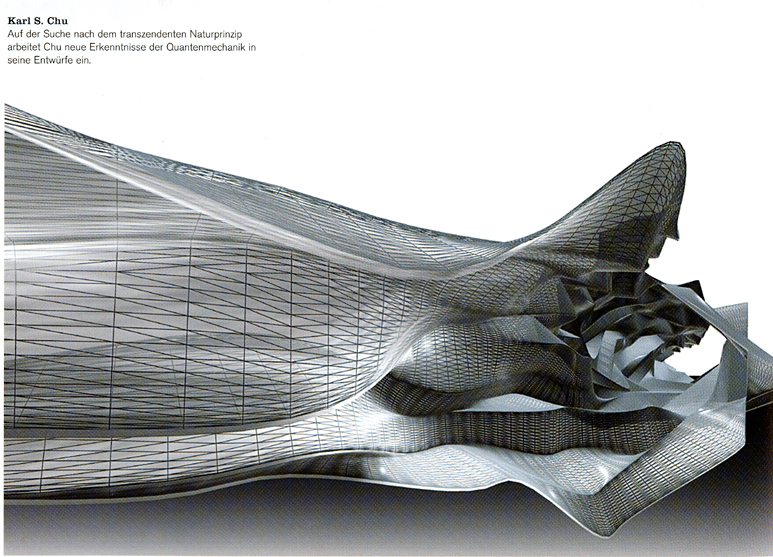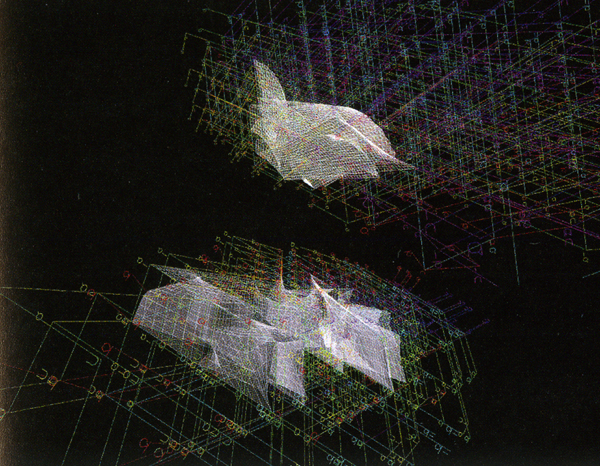
Toyo Ito: L'Œuf des Vents (Kaze no Tamago), Tokyo, 1989

"Auf der Suche nach dem transzendenten Naturprinzip arbeitet Chu neue Erkenntnisse der Quantenmechanik in seine Entwürfe ein." ( Bild-Kommentar aus dem Buch: James Steel, Architektur und Computer. Planung und Konstruktion im digitalen Zeitalter. München 2001, S.138)

Bei Architekten wie Karl S. Chu findet man eine computergestützte Steuerung des gesamten Entwurfsprozess. Chu bezieht sich dabei auf die Simulation evolutionärer Vorgänge in der Natur.
Virtual Reality Modeling Language (VRML)
Architects today have at their disposal this tool: Virtual Reality Modeling Language. Its significance and importance however is not its potential for re-presentation of built space as we know it nor is it the technology to merely entertain us with virtual visits. Instead, what might intrigue us as architects is the revisiting of the problematic of perception, formation of meaning, perspectival certainty, plasticity and form coupled with the procedures of dislocation, disembodiment, illusion and distraction.
VRML experiments now found throughout the web seem to be conspicuously devoid of architectural 'content' and for the most part are essentially disembodied presences. How, then, does the 'architect' engage this tool? Can the production of simultaneously 'occupied' and tranformational space reveal a new spatiality? Does the aspect of record, memory and mutation afford any spatial possibilities for architecture? Is the transmission of spatiality a form of information exchange particular to our time?
Columbia University, GSAP New York. Projekt Informing-Interiorities
Link auf der Website des Architektur-Zentrums Wien (www.azw.at)
http://www.azw.at/otherprojects/soft_structures/columbia/mainframe_columbia.htm
(Das 3D-Plugin von Cortona® VRML ist in den heutigen Browsern bereits enthalten).
VRML-Projekte von:
Alexander Minx
Jenai Medina
Mariano Desmaras
Miriam Torre
Winai Chairakpong